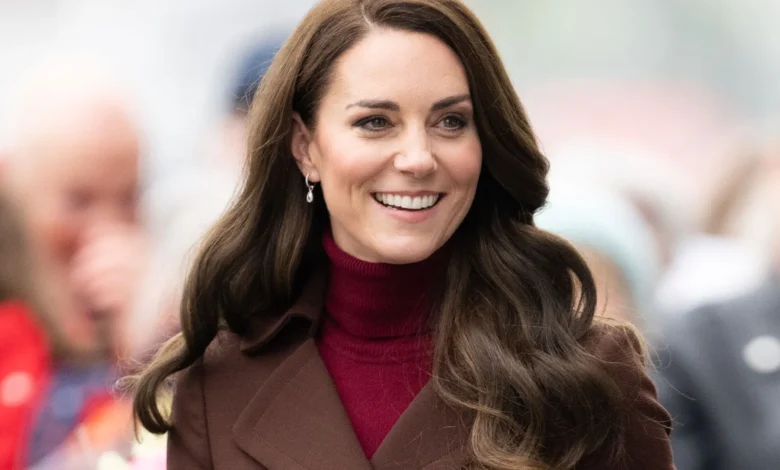The Enduring Legacy and Influence of Princess Kate

In the modern era of monarchy, few figures have captivated the world’s attention like Princess Kate. Born Catherine Elizabeth Middleton, she rose to global prominence following her fairytale romance with Prince William. But beyond the royal titles and public appearances, Princess Kate has quietly and steadily built a legacy rooted in service, grace, and modern sensibility. This article delves deep into her journey, from commoner to royal icon, and examines her impact on the British monarchy and the world at large.
Early Life of Princess Kate: Humble Roots with a Global Destiny
Catherine Elizabeth Middleton was born on January 9, 1982, in Reading, England, to Michael and Carole Middleton. Unlike traditional royal spouses, Kate did not come from nobility. Her upbringing in the village of Bucklebury, Berkshire, was comfortable but grounded. Her parents, former airline workers, founded a successful party supply company, Party Pieces, which provided Kate and her siblings with a stable and supportive environment.
She attended Marlborough College and later enrolled at the University of St Andrews in Scotland, where she pursued a degree in Art History. It was here that fate played its hand—Kate met Prince William, beginning one of the most talked-about love stories of the 21st century. Their friendship blossomed into romance, and though it faced its share of ups and downs, their commitment remained unshaken.
The Royal Wedding: A Modern Fairytale
On April 29, 2011, the world watched as Kate Middleton became Princess Kate, officially taking on the title of the Duchess of Cambridge. The wedding was broadcast live, drawing an audience of over two billion people globally. It symbolized more than just the union of two people—it marked a renewal of faith in the monarchy among younger generations.
The ceremony was elegant yet understated, much like the couple themselves. Kate’s wedding gown, designed by Sarah Burton for Alexander McQueen, received global acclaim for its timeless elegance. From that moment on, Princess Kate became a style icon, with the media closely tracking her fashion choices, which often reflected a blend of royal tradition and contemporary taste.
Philanthropy and Advocacy: A Passion for Mental Health and Children
What sets Princess Kate apart from many royal figures is her deep commitment to philanthropy. Rather than simply attending ribbon-cutting ceremonies, she has actively shaped initiatives and projects that address critical issues. One of her most impactful areas of focus has been mental health.
Alongside Prince William and Prince Harry, Kate helped launch the “Heads Together” campaign in 2016. The initiative aimed to tackle stigma around mental health and provide support for individuals struggling with emotional well-being. Her approach was personal and empathetic, with Kate often speaking candidly about the mental health challenges faced by new mothers and children.
Kate has also channeled her passion into early childhood development. She launched The Royal Foundation Centre for Early Childhood, which aims to promote awareness about how early experiences shape future well-being. Through evidence-based campaigns and expert-led research, she’s creating a legacy that could transform how the UK—and the world—approaches childhood education and emotional support.
The Style and Symbolism of Princess Kate
Fashion may seem trivial to some, but for Princess Kate, clothing has always been about more than looking good—it’s a powerful tool of diplomacy and symbolism. From wearing local designers during state visits to recycling outfits to promote sustainability, her choices reflect her values.
Her style is often described as elegant and classic. Designers such as Jenny Packham, Emilia Wickstead, and Catherine Walker are frequent staples in her wardrobe. Yet, she also supports high street brands like Zara and Marks & Spencer, making her relatable to the public. This combination of accessibility and aspiration has earned her widespread admiration.
More than just a trendsetter, Princess Kate uses fashion to subtly convey messages—whether it’s honoring the culture of a country she’s visiting or wearing a particular color in solidarity with a cause. She’s become a master of sartorial diplomacy, where every outfit serves a purpose.
Princess Kate’s Role in Modernizing the Monarchy
In recent years, the British monarchy has faced unprecedented scrutiny and calls for reform. Amid these turbulent times, Princess Kate has emerged as a stabilizing force. She is often described as the “rock” of the royal family—a figure who balances tradition with progress.
Unlike the dramatic media narratives that have surrounded other royal members, Kate has maintained a consistent and scandal-free public image. Her ability to remain poised under pressure has earned her the trust of the British public. According to recent polls, she is one of the most popular members of the royal family, second only to Queen Elizabeth II in her final years.
Her relationship with Queen Elizabeth was especially warm. The late monarch reportedly saw Kate as a future queen consort who could carry forward the legacy of duty and service. As Prince William moves closer to the throne, the role of Princess Kate will become even more crucial in shaping the future of the monarchy.
A Dedicated Mother and Public Figure
Beyond her public roles, Kate is a devoted mother to Prince George, Princess Charlotte, and Prince Louis. She has often spoken about the challenges of motherhood, striking a chord with many women who juggle professional and parental responsibilities. The royal couple has made it clear that they aim to provide a grounded upbringing for their children—balancing royal duties with normal childhood experiences.
Kate’s decision to prioritize her family, even while fulfilling royal engagements, reflects a modern approach to motherhood that resonates widely. Her parenting style appears nurturing yet structured, much like her overall demeanor.
The Future Ahead for Princess Kate
As the Princess of Wales, Kate’s role continues to evolve. With King Charles III now reigning and Prince William next in line, she is poised to become one of the most influential consorts in modern royal history. Her initiatives in early childhood, mental health, and education suggest a future queen who will be deeply involved in public service.
Moreover, her diplomatic presence on international visits and her ability to connect with people from all walks of life signal her potential to redefine what it means to be a queen in the 21st century. She’s not merely a figurehead but a working royal who understands the demands of the modern world.
Conclusion:
The story of Princess Kate is not just about a woman who married into royalty. It’s about resilience, responsibility, and reinvention. From her grounded beginnings to her role as a mother, philanthropist, and future queen, Kate embodies the evolution of the modern monarchy. She has redefined what it means to be royal in today’s world—not through grandeur, but through grace, empathy, and meaningful impact.
As the monarchy continues to navigate changing times, the presence of Princess Kate offers both continuity and hope. She is not only a symbol of elegance but also a beacon of substance. Whether it’s advocating for children, championing mental health, or representing Britain on the global stage, her legacy is already firmly in place—and still growing.





